Announcements
Foundry Map: Geospatial analysis in Foundry
Date published: 2022-11-22
Map out the digital twin of your world
With Foundry Map, you can now bring together and analyze data in a singular, geospatial context. Once data is imported into the Ontology, objects can be brought into Map for analysis alongside raster imagery and geospatial layers. Users of varying technical ability can now build, manage, and search through self-directed geospatial applications that can be easily shared and used across Foundry.
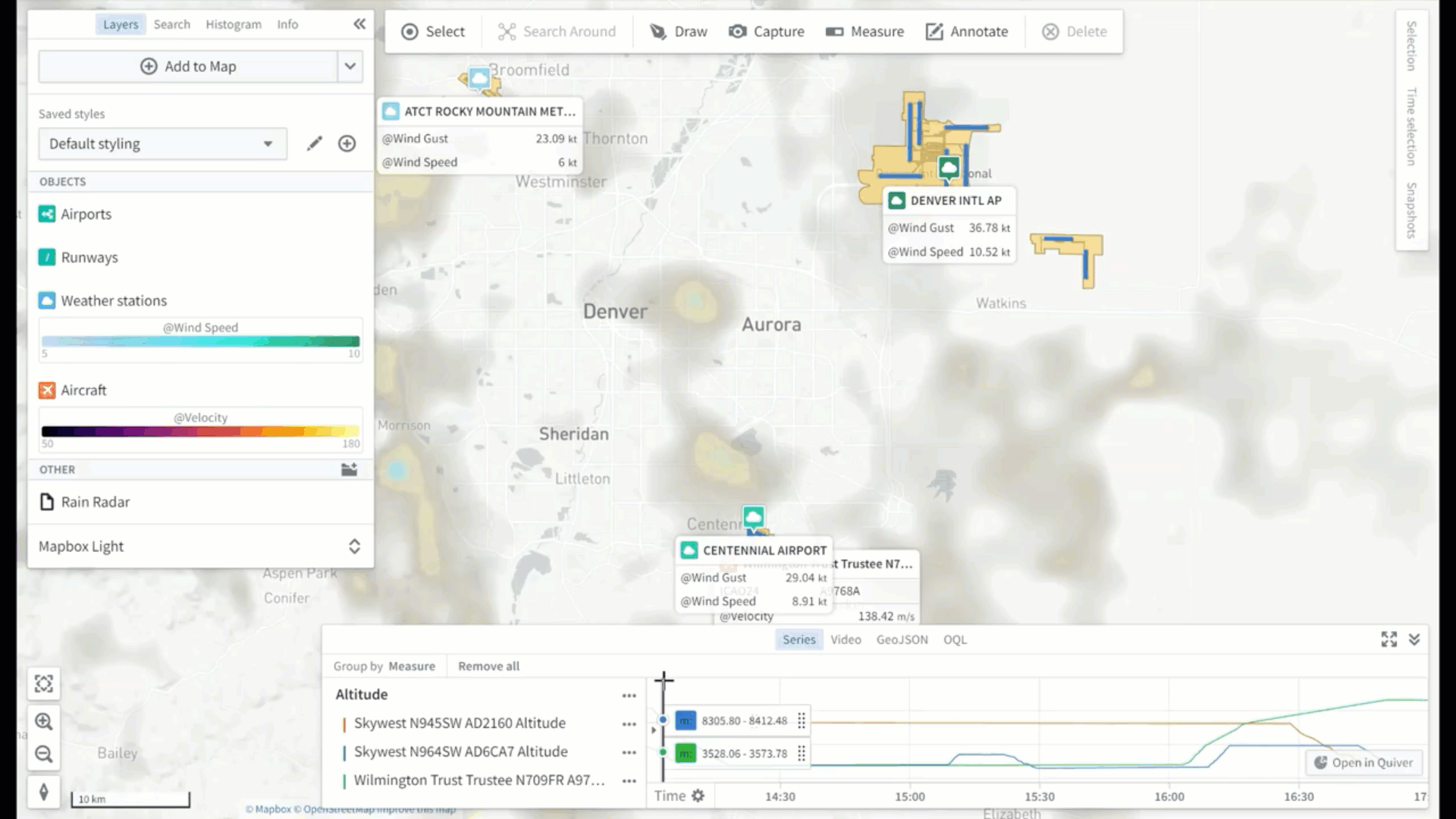
Use Foundry Map to:
- Explore connections between geospatial objects and traverse physical networks.
- Visualize contextual geospatial data from a variety of sources, including high-scale vector data and satellite imagery.
- Review temporal data such as events or paths of object movements over time.
- Search geospatially for point and polygon data, using bounding box and polygon intersection queries.
- Interact with maps by drawing shapes and add annotations or perform geospatial actions such as zone or area creation.
Follow your assets with track analysis
Foundry Map provides both live and historical location data, enabling users to visualize the tracks and movement of specified objects over time. This capability can be applied to any mobile asset, such as aircraft, ships and packages.
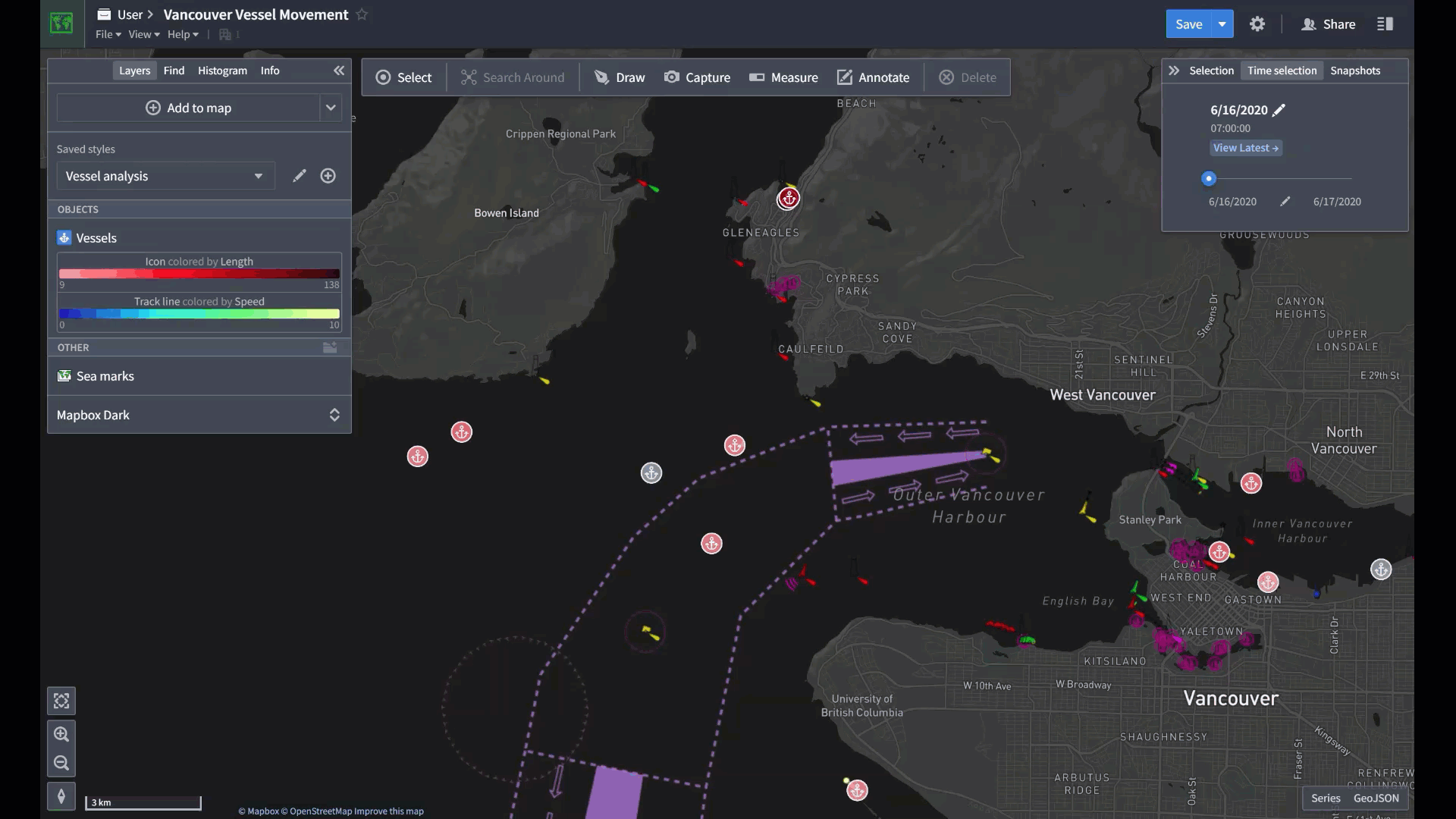
Track analysis can also be combined with other temporal data, such as sensors, IoT data streams, and events. Start by selecting any historical, current, and/or future time range, then identify a specific point in time to analyze the locations of objects. This enables you to better understand the general state of the world at a precise moment.
Add color to your time series data
With robust controls on color, Foundry Map makes it easier to visualize patterns, make predictions, and answer key questions. Users can change the color and style of objects on the map according to data values and bring together time series, time-dependent properties, and associated events for targeted situational analysis. For instance, this map shows a combination of avalanche regions, weather stations, and SNOTEL stations that display snow depth, location, and color-coded severity over time. Obtain high-level intuition in one screen, then interrogate the specific points of interest easily with the chart or jump into Quiver for dedicated time series analysis.
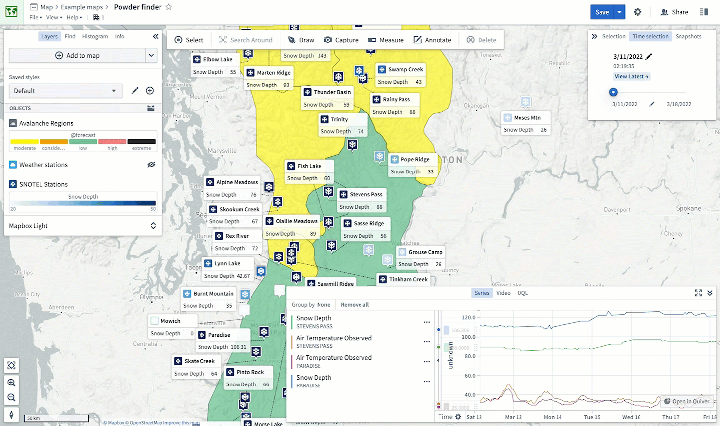
When should I use Foundry Map?
We recommend using Foundry Map for geospatial workflows, particularly in analyses that rely on both geospatial and temporal information. Foundry Map can be used in stand-alone analyses, as a template to generate new maps, or embedded into a Workshop application as a powerful geospatial component.
The introduction of Foundry Map does not affect the usage of existing maps in other Foundry applications. Existing map components, such as Slate, Contour, and Quiver, will continue to function as before.
Visit the Foundry Map documentation to learn how to set up your first map.
Slate: Redesigned Dependency Graph
Date published: 2022-11-10
Today, we are proud to introduce a complete overhaul of the dependency graph! The dependency graph supports users to investigate and understand the connections between different components in a Slate application and manage the complexity of mature applications.
In this update, additional application components like Actions, Events, and Global Variables are now represented in the graph. A node visual redesign and new layout engine improve legibility, especially in complex views. And it's easier than ever to jump into the graph view with quick links within widget, function, and query configuration panels.
Learn more about the new dependency graph in the docs.
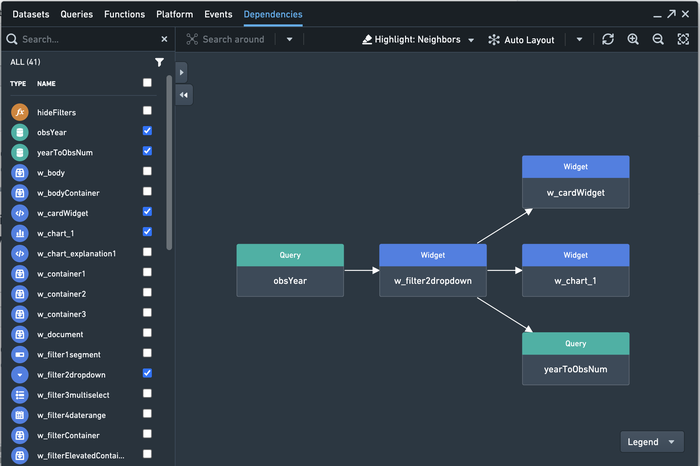 ---
---
Sunsetting Foundry Reports
Date published: 2022-11-01
Note: This notice announces the intent to deprecate the Foundry Reports functionality in favor of other reporting, dashboarding, and collaboration tools within Foundry.
Beginning early May 2023, new Foundry Report creation will be disabled for most customers[1] and existing ("legacy") Foundry Reports will become read-only. Legacy Foundry Reports will not need to be converted or transitioned to new formats unless they need to be edited.
All customers now have the following options available to replace the dashboarding and reporting functionality of Reports:
- Contour dashboards for content that is driven by a Contour analysis. Contour dashboards provide improved interactivity over Reports, with features like chart-to-chart filtering and an easy drag-and-drop interface to build the dashboard while iterating on the analysis. Contour dashboards also support a fullscreen presentation view and PDF exports. Get started with Contour dashboards.
- Quiver dashboards for content that is driven by a Quiver analysis. Quiver dashboards provide functionality unavailable with Foundry Reports, since Reports does not support embedding most Quiver visualization types. Get started with Quiver dashboards.
- Notepad for cross-product reporting. With Notepad, you can create both live-updating and static ("point-in-time") documents, annotate documents, share documents in-platform, and export documents as PDFs. Get started with Notepad.
Prior to disabling new Report creation, Palantir will provide the following functionality:
- Ability to export Contour dashboards as PDFs (expected late 2022).
- Ability to send Notepad documents via email on a schedule (expected early 2023).
- Ability to convert legacy Reports to Contour dashboards or Notepad documents (expected early 2023).
Contact Palantir Support with any questions.
[1] We will still support editing existing Reports and creating new Reports for customers who need to create dashboards with content from Code Workbooks. Read more about this use case here.
Additional highlights
Administration | Resource Management
Analysis tab added to the app | The analysis tab in the Resource Management app gives users the opportunity to explore their usage data in more depth. Here users can explore their usage by usage account, project, ontology, and source. Usage can be grouped together and explored in aggregate or viewed at the level of an individual Foundry dataset or resource.
Analytics | Contour
Add choropleth custom bucket color style for Contour map board | Choropleth layers in the new map board can now be colored using user-defined custom buckets. Users can define custom ranges for buckets and the colors that represent those buckets. The map will use this information to decide which color should be shown in each region.
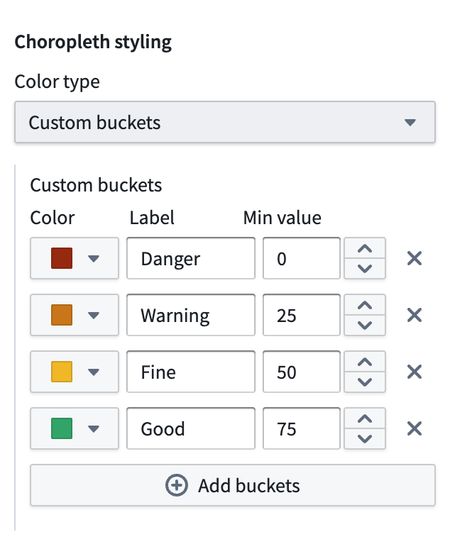
Analytics | Notepad
Allow PDF export from Notepad Templates without persisting Notepad | Previously, Notepad documents that were generated from templates for PDF download via Workshop's Notepad Template button always needed to be saved in Compass. The new "Save Notepad from PDF export" option (default for new widgets) provides the option to not persist the resulting document.
Add print page size options | Introduces a new print option for Notepad documents to configure the page size. Options available are: letter (current default), legal, tabloid, A3, A4, and A5. See more in the Notepad documentation.
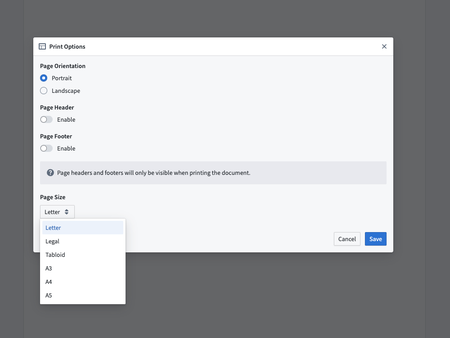
Analytics | Quiver
New Create Array transform | Added the ability to define an array by referencing an existing array or by manually specifying values (static, referencing a column, or referencing a parameter). This can be used as an individual card or apply in a transform table.
An improved Events plot backed by transform tables | The updated events plot can now plot event data from transform tables in addition to object sets. With transform tables you can modify (such as date shift) or enrich the underlying event data before plotting it. The chart plots events over a timeline, highlighting the number of events in each interval. Hovering over an interval shows a list of events in that interval, and hovering over each event will show the details of that event. Colors and event details are also configurable.

New dependencies view in card editor | Added a new Dependencies view in the card editor showing the data lineage (input and output cards) of the selected card in order to simplify dependency tracking without leaving the canvas. To streamline dependency navigation, clicking on an input or output card will change the focus to that card.
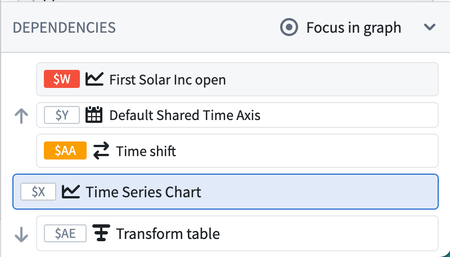
A new input type (time series) to transform tables | Time series plots can now be an input to a transform table. This converts the time series data into tabular format where it can be manipulated, edited, or enriched.

Added array input type support for calling functions on objects (FoO) and actions from Quiver | It is now possible to pass array primitives in Quiver into FoO functions and Actions that have array inputs defined.
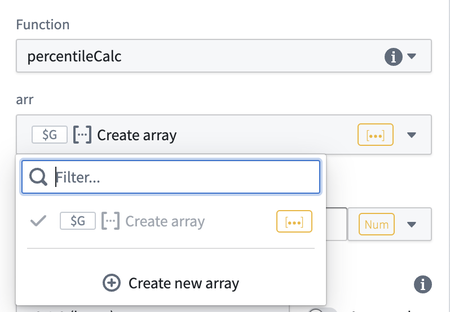
Date/time Boolean transforms released | Added the ability to compare timestamps using Boolean date/time transforms with the following transforms: before, on or before, after, on or after, on, not on, and between.
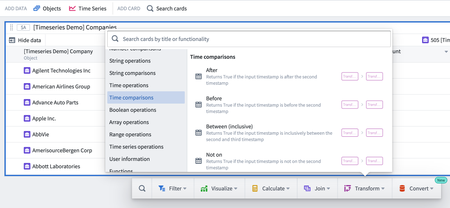
New output type (Tabular time series) for transform tables | Added the ability to directly convert tabular format time series data (timestamp and value) to a Quiver time series via transform tables, to then be able to use all the time series visualizations and transformations available in Quiver.
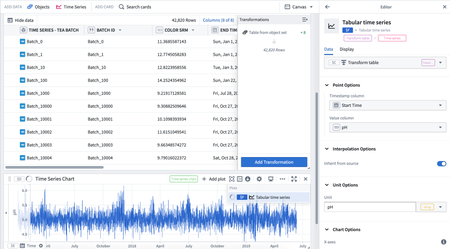
App Building | Slate
Add dependency graph popout | The dependency viewer can now be opened in a new full-screen window like other editor panels.
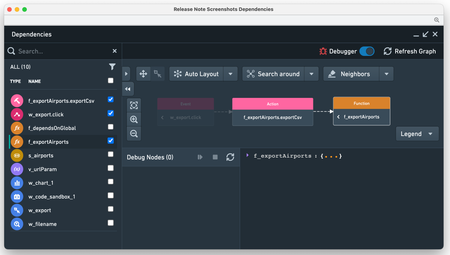
Removing code sandbox permission check | The code sandbox widget is available to all users and no longer requires privileged permissions.
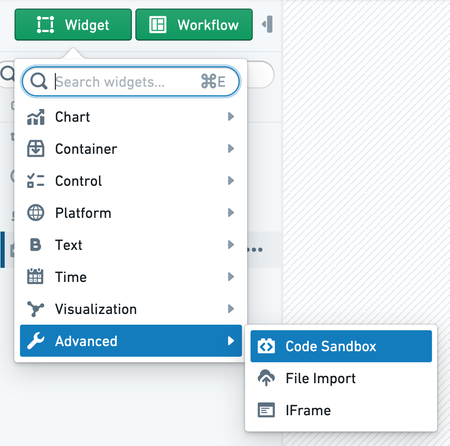
Shift-click allow selecting widgets | You can now add widgets from the Slate widgets sidebar to a multiple selection group by holding Shift or Cmd/Ctrl. Previously only selections made on the canvas could be added to a multiple selection group.
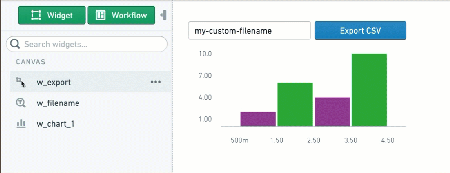
Data Integration | Code Repositories
Enable input prefiltering in Authoring Preview for more column types | Authoring preview now supports additional column types for input sample prefiltering. For more details on how to use previews for pipelining, refer to this guidance. Supported column types now include String, Boolean, Number types (Integer, Double, Decimal, Float, Long, Short), Date, and Timestamp.
Data Integration | Pipeline Builder
Autosave support | Pipeline Builder will now autosave changes related to a specific pipeline and branch. Autosaved changes are private to the user making those changes, and they are not committed to the version history of the pipeline. These changes will be restored automatically on page refresh and persist through log out/log in cycles. Once a user saves a new version to a branch, their autosaved changes are cleared.
Diagram
Advanced handling of scale and rotation component parameters | Updated the controls for editing scale and rotation parameters for diagram components to allow for more fine-grained control. In addition, these parameters can now be bound to object or series data, bringing them inline with other component parameters where this functionality is already available.
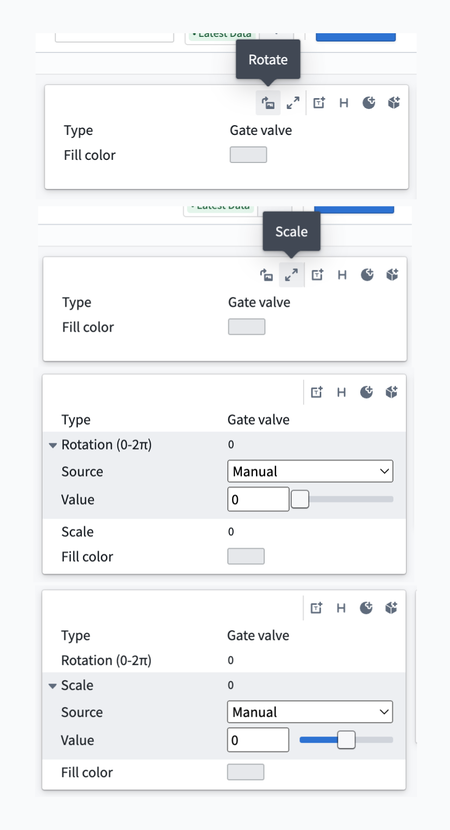
Ontology | Ontology Management
Enable the properties panel V2 for everyone | Redesigned properties panel, splitting different property configurations up into different tabs for easier navigation and more space for each configuration category.
Redesigned Action Form Sidebar | The parameter sidebar has been completely redesigned and now allows quick access to other parameters without requiring you to return to the form overview to do so.
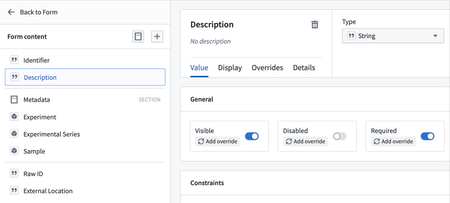
Ontology | Vertex
New home page | We've overhauled the Vertex home page, which opens when you select Vertex from the Foundry Workspace sidebar. It now allows you to explore all available Vertex resources, through quick access options and search. The home page gives you an overview of the number of graphs, graph templates, and Search Around files, as well as quick access to your favorites and recently used files. The search view allows you to search for graphs by name, and for templates and Search Arounds you can also search by object types they reference.
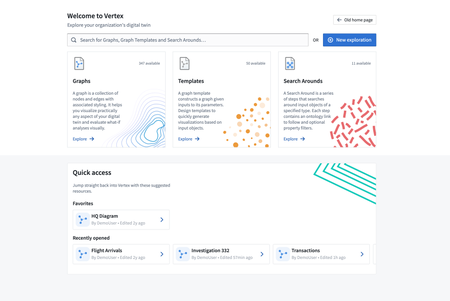
Security | Checkpoints
Add frequency setting for Login checkpoints | Login checkpoints can now be configured to display with a specified frequency. When creating a new login checkpoint, the checkpoint can be set to display for a user only after some specified amount of time has passed since the user last saw the same checkpoint.
